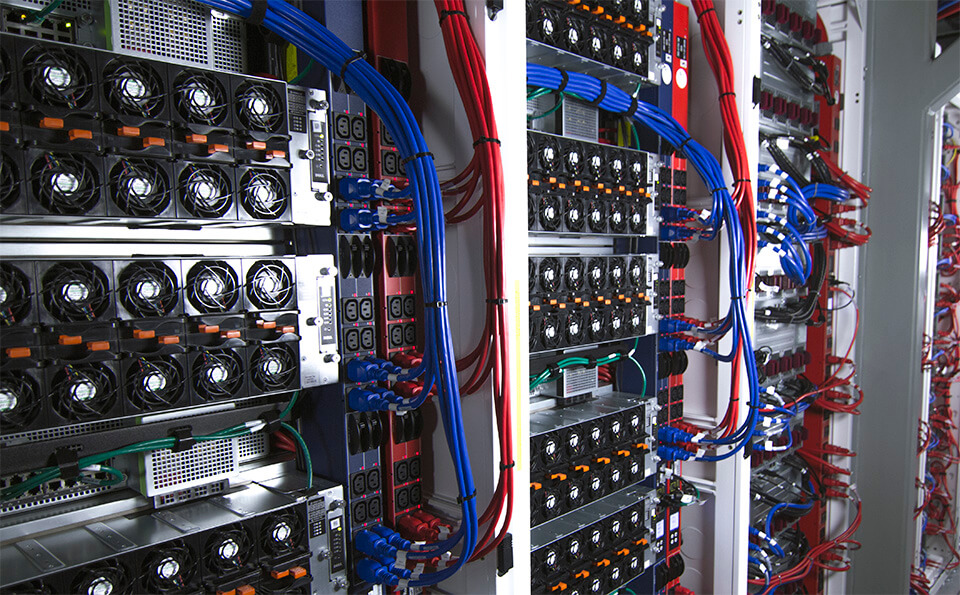The Raritan Blog
Home » Raritan Blog
Data Center Cabinet Load Balancing: there’s a less complicated way.
Scott Fier
March 28, 2017

Why do we load balance?
Without going into the complicated math, suffice it to say that load balancing in a 3 phase system is desirable. The more unbalanced a system the more problems it creates. UPS life, for one, can be affected by unbalanced systems. Although one circuit (server cabinet) being out of balance won’t have much effect, if many or all circuits on a panel are out of balance, the main circuit supplying the breaker panel will be out of balance and this can ruin your upstream UPS. There are also efficiency issues with unbalanced loads.
How is load balancing currently accomplished in a rack cabinet?
To balance a load in a cabinet, the loads of the equipment power supplies are spread across the 3 phases – L1/L2, L2/L3, L3/L1. This is done by plugging the first server (or switch/router) in an outlet wired on L1/L2, the next server on L2/L3, the next on L3/L1, then start over. The goal is to get an equal number of devices/loads on all 3 phases – or as close as possible.
This approach can quickly turn into a cabling nightmare. Most rack PDUs are linear in their phase layout of outlets – there are only three banks of outlets, one for each phase. For example, on a 36 outlet PDU, outlets 1 through 12 will be on L1/L2, 13 through 24 on L2/L3, and 25 through 36 on L3/L1. If you use the above method of balancing, and start racking the devices at the bottom U position, the third device you plug in will need to reach the top third of the PDU and the last device may have to reach back to the bottom of the PDU. In other words, a lot of crisscrossed cabling.
How do Raritan’s balance the cable and load balancing challenge?
In certain Raritan PX three-phase models the architecture gets around the cabling issue by staggering the grouping of outlets - there are at least 6 banks of outlets. For example, outlets 1 through 6 are on L1/L2, 7 through 12 on L2/L3, 13 through 18 on L3/L1, but then we start over at L1/L2 for outlets 19 through 24. (See Illustration below)
This intelligently engineered architecture results in more reliability and easier execution. The devices towards the top of the cabinet don’t need to be plugged in to the bottom of the PDU and devices at the bottom don’t need to be plugged in to the top.
Subscribe
Upcoming Events
- Advancing Data Center Construction West 2024
- May 6 – 8 • Salt Lake City, UT
- Net Zero Data Center
- May 16 – 17 • Dallas, TX
- 7x24 Exchange Spring
- June 9th • JW Marriott Orlando Grande Lakes
Latest Raritan News
- Legrand Certifications and Process Controls Provide Confidence in Information Security for Network-Connected Devices in Data-Related Applications
- Posted on April 1, 2024
- Legrand Releases Version 4.0 of Raritan’s Industry-Leading Secure KVM Switches, Raising Bar for Secure Desktop Access
- Posted on July 31, 2023
- Legrand Revitalizes Data Center Sector with Two Revolutionary Intelligent Rack PDUs
- Posted on May 1, 2023
- Raritan Reveals The MasterConsole® Digital Dual KVM Switch
- Posted on February 18, 2021
- Legrand Data, Power and Control Division Announced as Finalist in Six Categories at DCS Awards 2020
- Posted on November 9, 2020